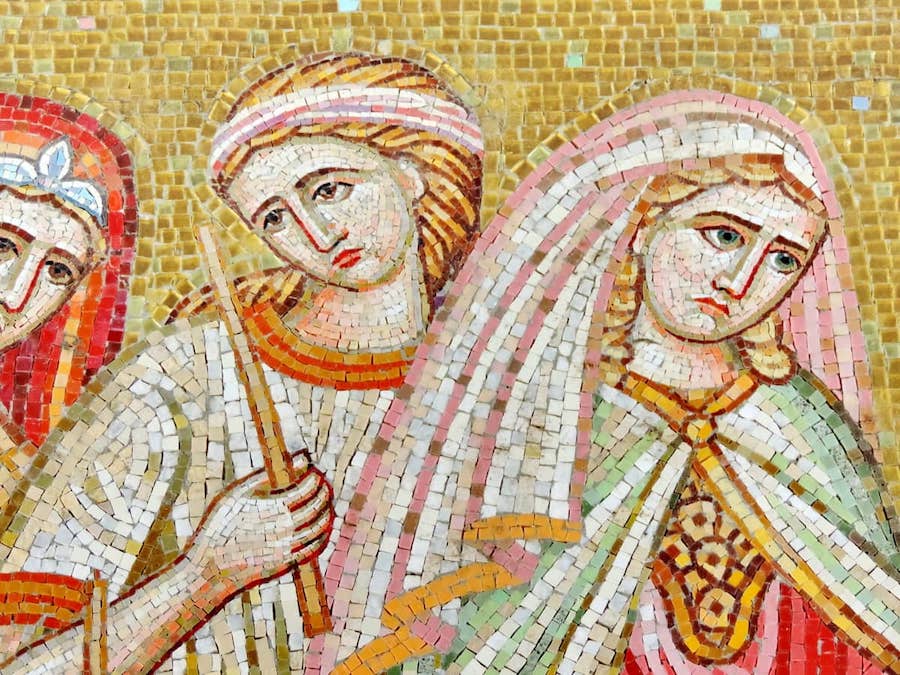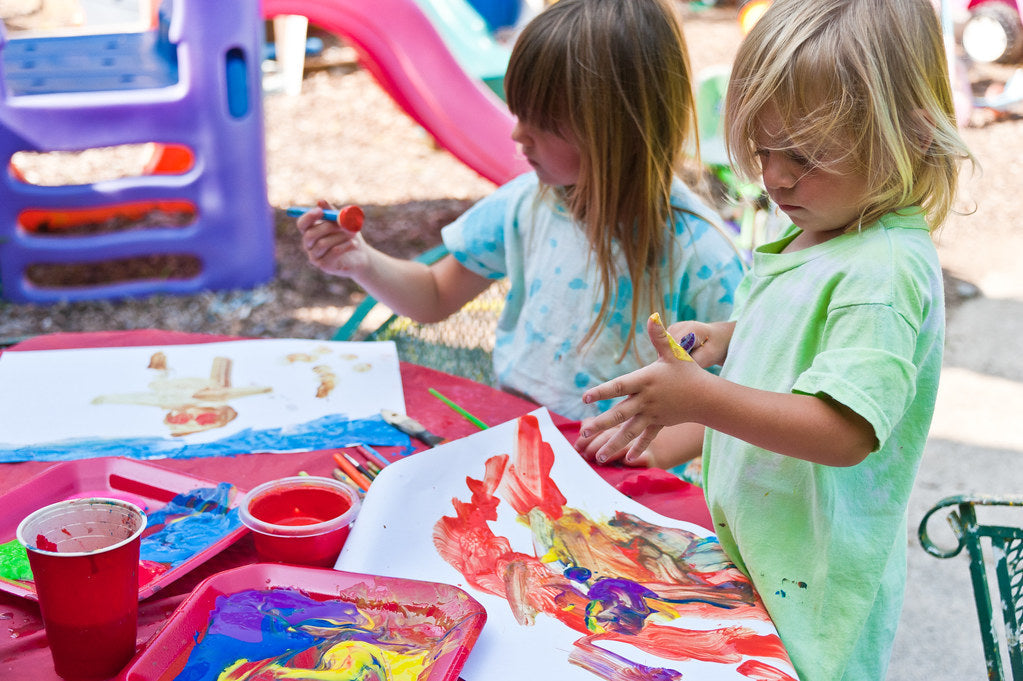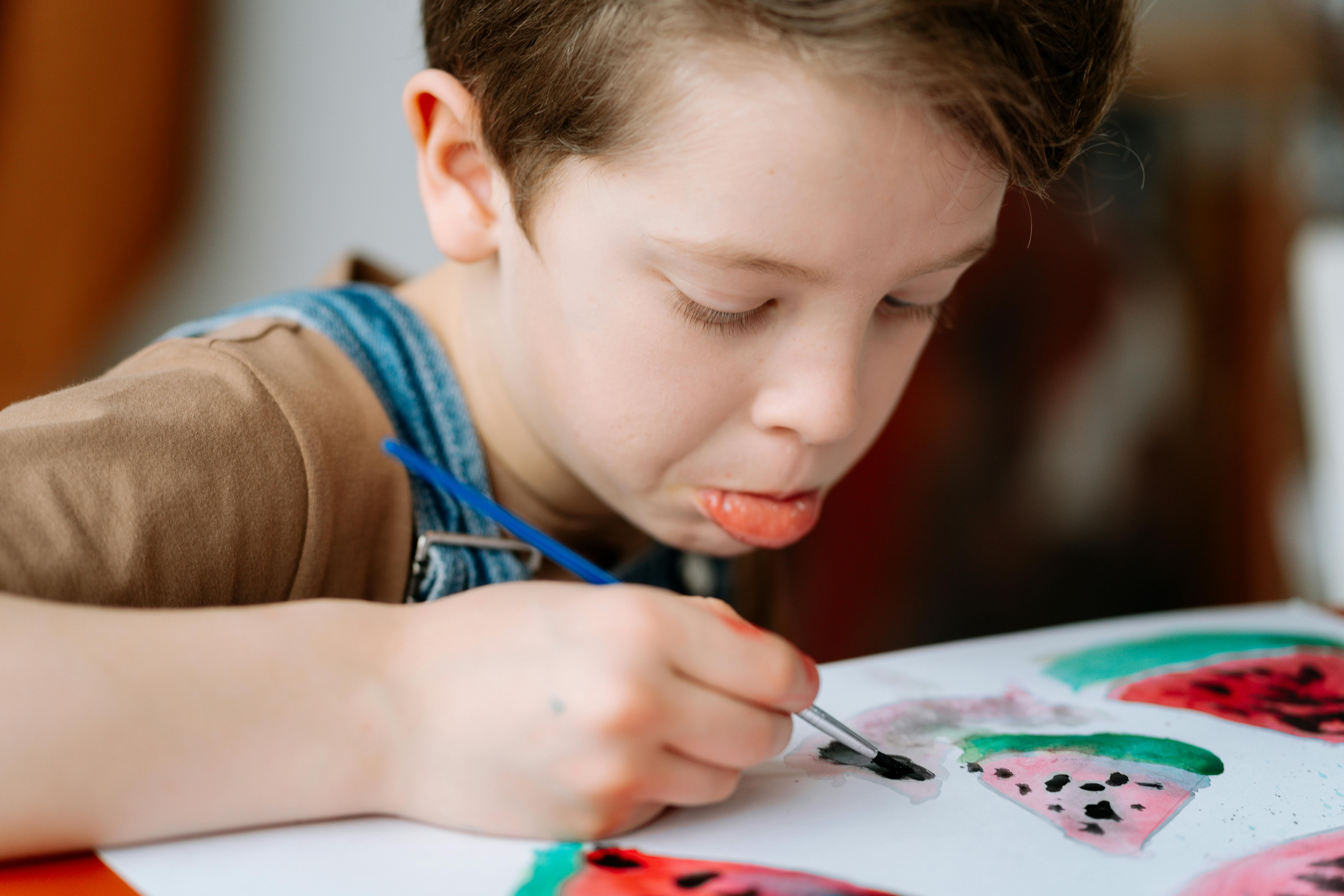
Why We Don’t Just Copy the Masters’ Art with Our Kids Art Projects
January 27, 2022
By Beth Herrild
All you have to do is search Pinterest for kids art projects and your screen will be immediately flooded with Monet-esq water lilies in tempera paint and Degas ballet dancers made from coffee filters. But do kids learn anything by trying to recreate the appearance of famous art using craft supplies?
The Tradition of Students Learning By Copying
The tradition of students learning by copying great artists definitely goes back to the Renaissance, probably even earlier. The idea was that students would copy the works of their teachers to refine their skills and techniques. This makes sense when we’re talking about refining actual brush strokes and specific high level techniques as part of a trade or college curriculum. When I was in college, I had to do a drawing that was a copy of one of the masters. I chose one of Michelangelo’s portraits. To this day, I believe that closely studying his marks and trying to recreate them was an excellent learning experience. Again, I was in college.

But in terms of elementary age kids, we need to ask ourselves what exactly we hope for them to get out of the experience of copying famous artwork. Are they just creating a project that’s cute because it looks kind of like Monet’s water lilies? That can be fun, but it’s not a kids art project, it’s more of a craft than art. We should be teaching them why this artist’s work is important.
Kids CAN learn A Lot By Studying Artists & Their Work
Kids CAN learn a lot by studying great artists and their artwork. Take Monet, for example. He’s important to study since he’s considered the founder of the Impressionist movement. The movement got its name because his painting, Impression Sunrise, was slammed by the critics as just being an impression of a sunrise rather than a finished painting.
When kids are taught what artists were interested in, and what they were trying to convey with their art, it helps them see the art in different ways and begin to understand it. Young children may not fully comprehend all of it. But if they’re exposed to the artists and their artwork at a young age, they’re more likely to develop an interest in art than if they started looking at it as teenagers.
Monet was fascinated by the effects of light on color and form. He painted several series of paintings showing the same subject matter at different times of day and on sunny and overcast days. Those different renditions can be used to help kids observe how light affects color and form in similar scenes. Studying Monet’s life can also teach kids about what was going on during the time period in history in which he lived. Think of all of the time and effort he put into painting the Rouen Cathedral over thirty times! Knowing that can teach kids about perseverance and resilience.
Learning about artists’ lives and artwork can help kids learn about history and culture in different fun ways. It’s like a window into the life and attitudes of a period. For instance, pre-Renaissance European art during the Middle Ages is flat and expressionless, mostly focused on religious subjects. At that time, the church was the most powerful institution in Europe. Scientific development was almost non-existent, because much of the Roman Empire’s innovations had been lost. It was also a time where the feudal system was thriving and serfs (peasants) weren’t much better off than slaves, with little hope of elevating their station in life. The Middle Ages also included the Crusades and the Black Plague. No wonder art was a dreary thing. But that was Europe.

Mosaic from the Middle Ages in Europe
In contrast, during the Middle Ages in the Islamic world, art and innovation were at a cultural peak. It took the dawn of the Renaissance in Europe for art to become lighter and more colorful, reflecting the Renaissance mindset of learning and exploration.
Monet and the other Impressionists used strong short brushstrokes that weren’t smoothly blended; and bold paint colors, often straight from the tube or mixed on the canvas (as opposed to mixing them on a palette first). Their paintings went against the blended smooth colors and strokes of the classical art that was respected at that time. Teaching kids about this can help them learn different ways to approach painting and help them figure out what they like and how they want to approach their own art. It can also show kids how to take risks and not be constrained by established ways of doing things.

Monet, like many of the great artists in history, also struggled a lot during his lifetime. He was often poor and had bouts of depression. Post-impressionist, Henri Rousseau, was a self-taught painter who wouldn’t give up despite being laughed at repeatedly by critics. He is the embodiment of the growth mentality we all want to instill in our kids. Most of the artists we consider to be the masters, were during their lives poor and often discouraged. Learning about the artists behind the paintings can also help kids understand that all lives are full of challenges and ups and downs.
So What Do We Do?
All of the insights shown above can’t be appreciated by kids looking briefly at a Monet painting and trying to recreate its appearance using craft supplies. That’s why, at Outside the Box Creation, when we study great artists, we try to make that study meaningful to the kids in deeper ways. Also, the Masters, as they are often referred to, represent one segment of society and narrow time periods. We believe it’s important for kids to be exposed to artists from all different backgrounds, life experiences and time periods.
So before you dive into a Pinterest project recreating Van Gogh’s Starry Night with a fork and some tempera paint, consider teaching kids more about his work and his life. Encourage them to create artwork that is meaningful to them. We taught about Picasso and Cubism but encouraged kids to create art in that style that was meaningful to them. Perhaps, as a tribute to Monet, you could take them to see a real live water lily!

